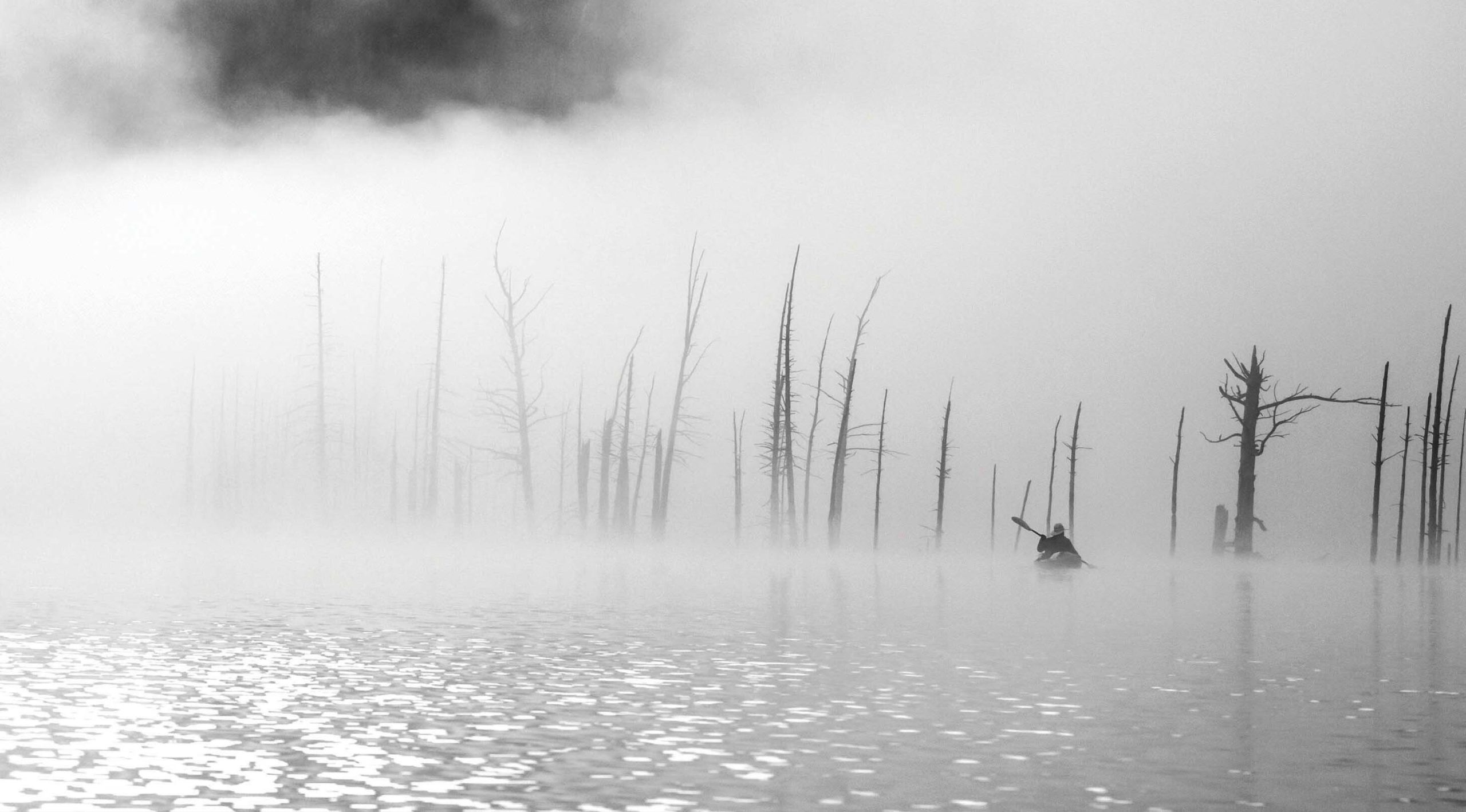
22 Nov IMAGES OF THE WEST: MINIMALISM
As the foggy autumn faded beyond my reach, my journey tempted me yonder into the vacuum of winter’s mantle of snow. I was looking for minimalistic subjects, basic in shape. The mesmerizing simplicity is key when I’m looking for a single point of interest. Highly sought spatial isolation lies within “negative space.”
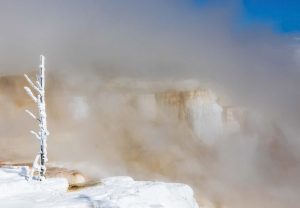
Canary Spring at Mammoth Hot Springs in Yellowstone National Park is an ideal subject for a frosty, steam-filled morning; I spend hours in this area looking for new formations.
My thought process involves creating a balanced composition with a distinct subject that still involves aesthetically pleasing, basic compositional rules. My observational eye sees these harmonizing features forming an “imbalance” between a smaller subject and a much larger negative space. The viewer’s attention is held between the point of interest and the winter expanse as the two connect.
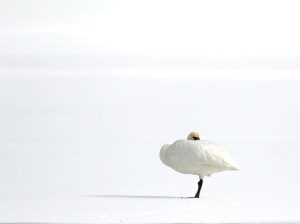
Titled Me and My Shadow, this image shows that, even in overcast light, the white swan is never quite alone.
Utilizing subdued background colors with subtle lines when my subject is in the foreground is also within the minimalist spectrum. Blending and combining these elements creates my entire minimalist photo. The “defined” subject is always the main focal point of interest.
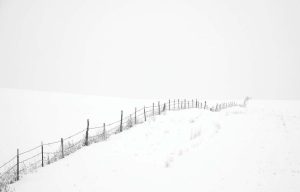
Fencelines always intrigue me as they undulate over the hills into a limitless void. I find they speak of infinity, which leads to endless curiosity.
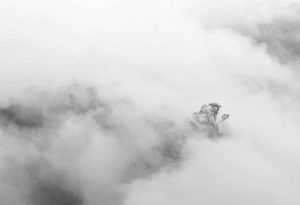
With fog or steam, minimalist angles can suddenly appear as the subject is engulfed and exposed. This photo was taken during a six-day motorbike ride in North Vietnam, where the scenery was beyond belief.
Delving deeper, my eyes and thoughts make me reflect beyond the actual scene. I leave breathing room for my subject to exaggerate the isolation when nothing else detracts. The amount of barren space is a greater percentage in size than the subject, which adds to the sense of isolation, solitude, and stillness. While the emphasis in this austere expanse supports the idea of infinity, the subject is swallowed into the void.
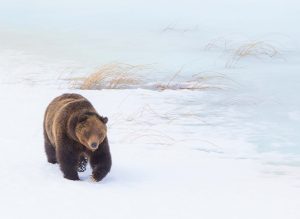
It was April when the Blacktail Ponds in Yellowstone were frozen and this resident grizzly came across the valley to feast on its meal: a frozen bison carcass trapped in the ice. When there is movement in my subject, I always key in on the shape of the legs, wanting a break at the “elbow” to show motion.
But let’s not forget that a simple foreground subject can contrast against subtle or even boldly colored backgrounds.
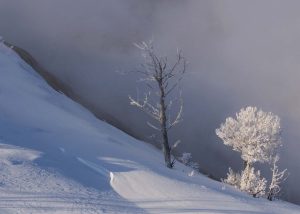
A lightly frosted tree clings to a slope at Palette Hot Spring in Mammoth Hot Springs, while its companion bush is veiled in white. For the best Mammoth atmosphere, I usually arrive around 8 a.m., before the steam dissipates.
Looking at my subject’s location and seeing it close versus from afar, I continue maintaining basic compositional elements, balancing the scale with empty space. This space implies infinitesimal nothingness.
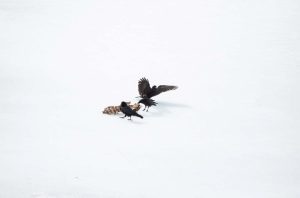
The stark black ravens against a canvas of white intensifies the barren contrast between the birds and bones.
Black-and-white photos further remove adornment. Shades of empty space can be smooth or textured — defined by an overcast sky, a calm lake, fog, or a blizzard — while my prominent feature contrasts and leaves my viewer in questioning awe.
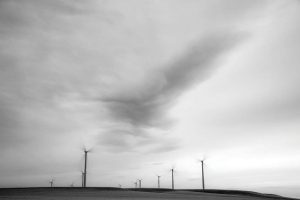
A few years ago, I visited the Judith Gap, Montana wind farm to capture these alien statues. Clouds are an important ingredient in any landscape photo, and I was ecstatic when I saw the ominous masses approach. I slowed my shutter speed enough to get the fans’ whirring movement and a soft, creamy effect with the clouds. Experimenting with black and white lends a more menacing mood.
The idea of minimalism often becomes the point of the discussion. Remember that negative space is the essential component, but how much space or how much the space intrudes upon the subject might be left up to the photographer and the viewer. The beauty of visual solitude naturally accepts the endless void. Observation and a quiet awareness are seen in their entirety. Often, it is this simple subject matter that is unseen, left behind as we journey elsewhere in search of the big things in our photo quests.
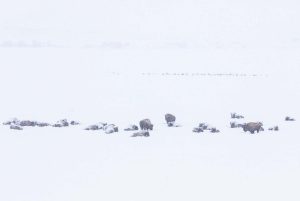
Parallel lines between the foreground bison and the distant flock of geese stopped me cold as I pondered this scene. Once again, it wasn’t a scene of beauty, but one of simplicity and survival prevailing as the snow continued to cover the bison.
The simple aesthetics of my minimalist photography hold my attention, and hopefully yours — whether in black and white or in color — because there are no distracting features. I stop, compose, and am inspired to speak visually of the silence I experience within a winter’s retreat.
Carol Polich has been a nature photographer and author for the past three decades. Her written and visual work has been featured in regional, national, and international magazines, and her images have been included in many calendars. An exhibit of her fine art canvas-print collection is on display at the Gem Gallery in Bozeman, Montana through the 2024–25 winter season; wildnaturetrails.com.




No Comments